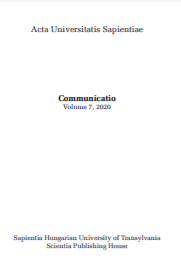Trend Analysis of Technologies Supporting the Availability of Online Content: From Keyword-Based Search to the Semantic Web
Trend Analysis of Technologies Supporting the Availability of Online Content: From Keyword-Based Search to the Semantic Web
Author(s): Tünde Lengyel MolnárSubject(s): Media studies, Semantics, ICT Information and Communications Technologies
Published by: Scientia Kiadó
Keywords: semantic web; Web 2.0; Web 3.0; LRM; Library Reference Model; RDF; search systems; semantic search;
Summary/Abstract: The era of Web 1.0 implied the connection of web-based documents via links, which enabled search engines to scan for information and guarantee the search and availability of webpages. Web 2.0 represented the next evolutionary stage. Known as the collaborative web, the emphasis in this case was on the establishment of services and content by the community. Search options were complemented with labelling and frequently undesirable clickstream analysis coupled with push technology-supported information provision. The semantic web is a revolutionary development, which, in addition to processing information by humans, assures the readability of datasets by machines and facilitates communication between devices. In order to promote data and information processing by machines, the semantic web relies on a special ontology allocating the respective meaning to the given data along with relying on the global indexing and naming schemes of the web. Several ontologies emerged with differing basic guidelines while displaying compatibility to the RDF standard ranging from the more semantic description of bibliographical data in libraries to the description of information gained from social networks and human conversations. While Web 3.0 is often used interchangeably with the semantic web, the former one with its intelligent server function exceeds the semantic web. We have to ask ourselves, however, whether we can rely on the accuracy of the obtained data, and we must explore what progress have libraries – expected to increase reliability – made regarding the implementation of semantic data storage.
Journal: Acta Universitatis Sapientiae, Communicatio
- Issue Year: 2020
- Issue No: 7
- Page Range: 92-106
- Page Count: 15
- Language: English

